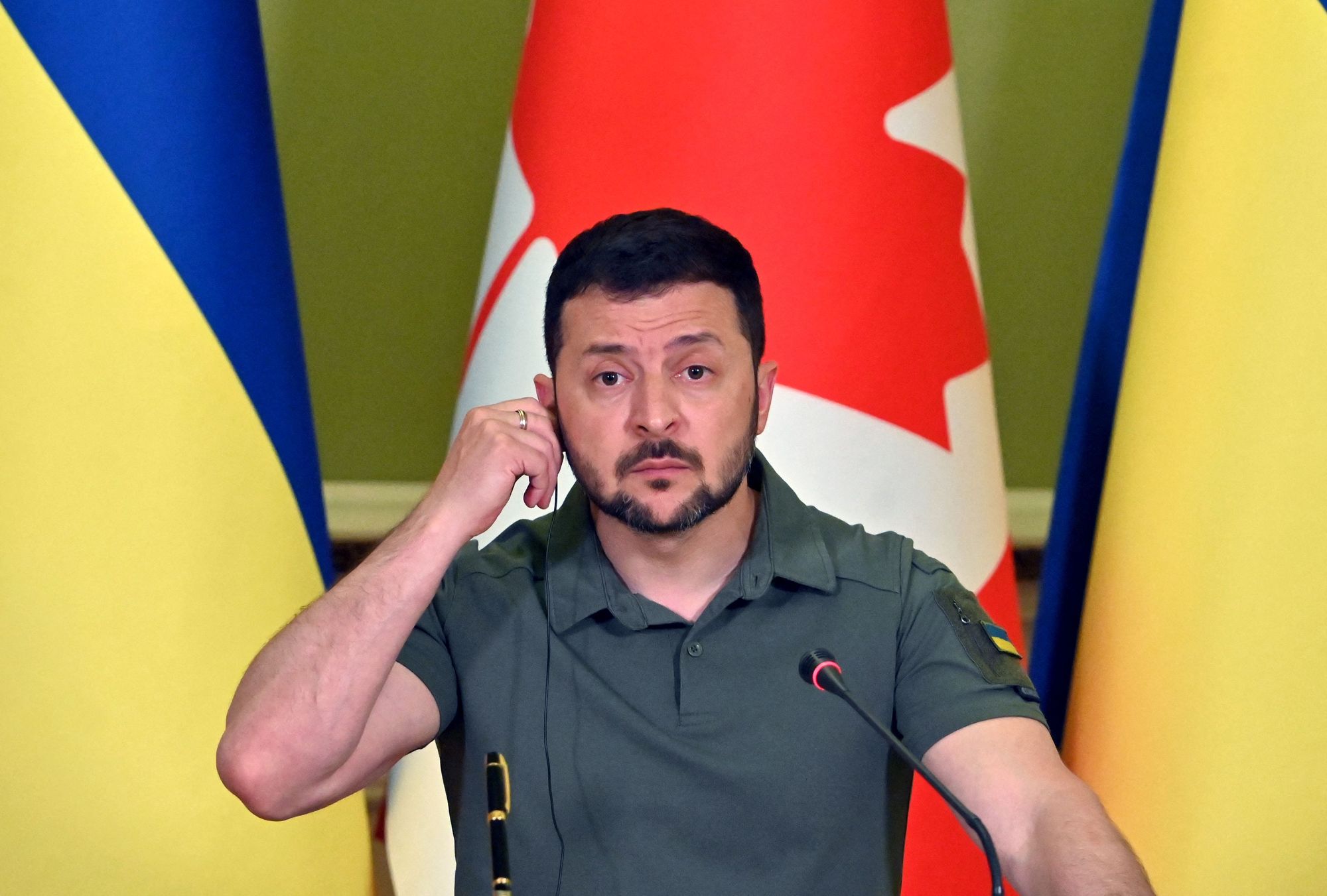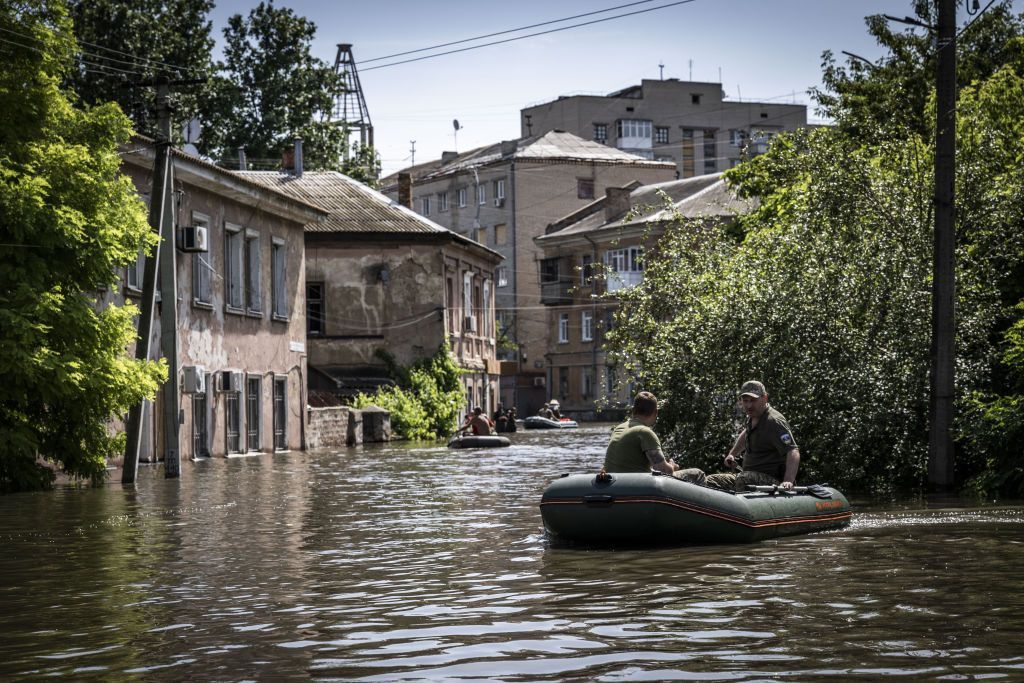Ukraine war latest: Ukraine liberates 2 more villages; Zelensky says 'rain makes task harder'

Key developments on June 12:
- Ukrainian military confirms liberation of Storozheve, Novodarivka
- Russia preparing evacuations, sabotage in Crimea
- 10 dead, 42 missing due to Kakhovka Dam disaster
- Russian attacks kill 5, injure 21 over June 11-12
Ukraine's military confirmed another two villages were liberated as the ongoing counteroffensive pushes forward in Donetsk and Zaporizhzhia oblasts.
Novodarivka in Zaporizhzhia Oblast was reportedly liberated back on June 4 by the Separate Zaporizhzhia Territorial Defense Brigade, while the 35th Separate Marine Infantry Brigade reported liberating Storozheve in Donetsk Oblast.
Meanwhile, Russian proxies in occupied Tokmak and Melitopol in Zaporizhzhia Oblast claimed strikes by "unguided Western long-range rockets" against the cities, without providing any further information on the aftermath.
According to the Institute for the Study of War (ISW), Ukraine's troops made visually verified advances in Donetsk and Zaporizhzhia Oblast, which Russian officials continue to downplay.
Citing the U.K. official Tobias Ellwood, Sky News wrote that Ukraine may launch a "major attack" against Russian forces in the eastern Donbas region "in the next few days."
"The main front of the Ukrainian capability still in reserves ready for that singular attack," Ellwood, who is the head of the U.K. parliament's defense committee, said.
On June 11, Ukraine confirmed the liberation of Blahodatne, Neskuchne, and Makarivka villages in Donetsk Oblast, while in the south the troops advanced in two directions from 300 to 1,500 meters.
"Although the weather is unfavorable these days – the rain makes our task more difficult – the strength of our warriors still yields results," President Volodymyr Zelensky said on June 12.
Russia preparing evacuations, sabotage in Crimea
Russia is preparing evacuations in the occupied city of Armiansk in northern Crimea amid the Kakhovka Dam breach, as well as "sabotage operations" at a factory in the city, Ukraine's military intelligence reported on June 12.
A shortage of water coming through the North Crimean Canal has critically disrupted the functioning of the Crimean Titan plant, a factory producing titanium dioxide, according to the report.
Evacuation preparations are reportedly underway for Russian proxy leaders in the area, as well as the local population.
The military intelligence added that Russia may put a full halt on the plant's production, adding that the plant's engineers have been laying explosives in the facility.
"A terrorist attack on the Crimean Titan enterprise, which the Russian invaders are preparing, will mean an artificial man-made catastrophe, terrible in its consequences," Ukraine's military intelligence wrote, as around 200 tons of ammonia, stored in the facility, could be released into the atmosphere.
Such a disaster would threaten Armiansk, the Krasnoperekopsk district in Crimea, and the southern districts of Kherson Oblast, the intelligence report said.
Russian forces destroyed the Kakhovka Dam on June 6, triggering one of the largest man-made environmental and humanitarian disasters in Ukraine's history.
The breach represents a serious water supply crisis for Crimea, disrupting the water flow through the canal to the occupied peninsula.
On June 11, the U.K. Defense Ministry reported that the canal draws water from the Kakhovka Reservoir "from an inlet higher than the bed of the reservoir."
By June 9, however, the water level in the reservoir had "likely dropped below the level of the inlet," and "water will soon stop flowing to Crimea," the ministry added.
The local proxies lack a clear plan for countering the freshwater shortage and instead downplay the crisis, the Ukrainian military's National Resistance Center reported on June 10
10 dead, 42 missing due to the Kakhovka dam disaster
As a result of the flooding caused by Russia’s destruction of the Kakhovka Dam, 10 people died, and 42 are considered missing, including seven children, Interior Minister Ihor Klymenko said on June 12.
Eight people died in Kherson Oblast and two in Mykolaiv Oblast.
The number of casualties on the Russian-occupied east bank of the Dnipro River is yet to be confirmed, Klymenko said on national television.
After several days of heavy floods, water levels are steadily dropping.
Kherson Oblast Regional Administration reported the water levels at 3.1 meters by 2:45 p.m. on June 12.
Some 46 settlements have been flooded, 32 of them on the government-controlled right bank of the Dnipro River and 14 on the occupied left bank.
On the right bank, 3,801 houses have been impacted by the floods.
The Interior Ministry reported that 2,743 residents have been evacuated from Kherson Oblast, including 205 children and 76 people with reduced mobility.
In Mykolaiv Oblast, 31 settlements have been flooded, from which 982 people, including 167 children, have been rescued, the ministry wrote on Telegram.
The effects are not limited to Mykolaiv and Kherson oblasts, as the draining of the Kakhovka Reservoir left almost 165,000 households in 32 settlements in Dnipropetrovsk Oblast without water supplies.
According to the Ecology Ministry, only 28% of water remained in the reservoir by the morning of June 12.
Russian forces destroyed the Kakhovka Hydroelectric Power Plant’s dam on June 6, sparking a humanitarian and environmental disaster across southern Ukraine.
Russian attacks kill 5, injure 21 over June 11-12
On June 11 and 12, Russian attacks against Ukrainian villages and cities killed five civilians and injured 21 more.
Russian attacks were reported in Donetsk, Sumy, Chernihiv, Kharkiv, Kherson, Zaporizhzhia, Mykolaiv, Dnipropetrovsk, and Luhansk oblasts.
Russian forces struck southern Kherson Oblast 26 times on June 11, firing 132 rounds from artillery, mortars, Grad multiple launch rocket systems (MLRS), aviation, and drones, the regional administration wrote.
The attacks killed three civilians in the region and wounded 12 more, according to Kherson Oblast Military Administration.
In Ukraine's eastern Donetsk Oblast, Russian attacks targeted Avdiivka several times over the past two days, killing one person and injuring two more, Governor Pavlo Kyrylenko reported.
Elsewhere in the oblast, two people were wounded in Ivanisvke. Russia hit five settlements and two communities in the region, damaging two houses, outbuildings, and a depot, said Kyrylenko.
Russian troops hit four districts in Kharkiv Oblast with mortars, artillery, and missiles, wounding a 40-year-old man in the village of Vilkhuvatka and a 33-year-old man in Shevchenkove, reported Governor Oleh Syniehubov. The damages in Kharkiv Oblast include at least 16 houses, an industrial facility, garages, and outbuildings, he added.
In Luhansk Oblast, a man received a mine-explosive injury and shrapnel wounds in a Russian attack on the village of Nevske near the border with Donetsk Oblast, according to the regional administration. Russia reportedly struck six settlements in the region, damaging infrastructure facilities.
Russian forces attacked 17 settlements in Zaporizhzhia Oblast 74 times over the past day using MLRS and artillery, as reported by the regional administration. A 50-year-old woman was wounded in a Russian attack on the village of Novoselivka, reads the report.
Later on June 12, Russia target Zaporizhzhia again with air strikes, killing one 48-year-old man and injuring a 32-year-old in the the front-line city of Orikhiv, Governor Yurii Malashko reported.
"Three guided aerial bombs launched by the enemy hit the city's territory: private houses and road infrastructure were damaged," the governor wrote on Telegram.
















